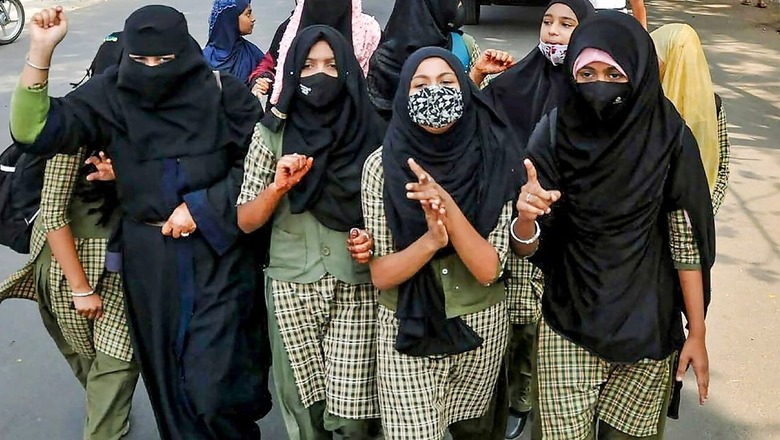
views
The Supreme Court on October 13 delivered a split verdict on a batch of pleas challenging the Karnataka High Court judgement refusing to lift the ban on hijab in educational institutions of the state. While Justice Hemant Gupta dismissed the appeals against the high court verdict, Justice Sudhanshu Dhulia allowed them. The hijab controversy began in January this year from Udupi in Karnataka after a batch of students alleged that they were barred from classrooms for wearing hijab. The students started to protest against the college administration.
Several petitions have been filed in the apex court against the Karnataka High Court verdict holding that wearing of hijab is not a part of the essential religious practice which can be protected under Article 25 of the Constitution. Here’s a timeline of events that happened in 2022:
January 1: Six girls said they were barred from entering their classroom wearing the hijab at a Government PU College in Udupi, and sat in protest outside the college over being denied entry. The students held a press conference, where they said that permission was sought but college authorities refused to let them enter the classroom with their faces covered.
Also read| From Haryana MBBS Bond Policy to Chandigarh University, Major Student-led Protests Held This Year
January 26: The Karnataka education department decided to form a committee to draft guidelines on uniforms at pre-university (PU) colleges across the state. The PU board requested all colleges to maintain the status quo until the new guidelines were brought to force.
January 31: Several writ petitions were filed in the Karnataka High Court by Muslim students who sought the right to wear hijab in classrooms under Articles 14, 19, and 25 of the Constitution of India. In their petition, they contended that wearing hijab is a fundamental right and that the Constitution granted the freedom to profess, practise and propagate any religion.
February 5: Karnataka government imposed a ban on hijab in classrooms.
The issue snowballed and protests were held across the state — by those supporting the hijab and counterdemonstrations by youth wearing saffron scarves demanding the girls fall in line.
February 16: The Karnataka government issued a circular quoting the High Court’s interim order that directed all schools and colleges under the minority welfare department not to allow hijabs, saffron stoles and scarves in classrooms.
March 15: The High Court had dismissed the petitions filed by a section of Muslim students of the Government Pre-University Girls College in Karnataka’s Udupi seeking permission to wear the hijab inside classrooms, ruling it is not a part of the essential religious practice in Islamic faith.
HC verdict challenged before Supreme Court hours after judgment.
July 13: Supreme Court agrees to hear petitions filed against the Karnataka HC’s verdict.
September 22: Supreme Court reserved the verdict on pleas.
The bench heard the arguments from the counsels representing the state government, teachers, and the petitioners, who moved the apex court challenging the Karnataka High Court verdict refusing to lift the ban on hijab in educational institutions of the state.
October 13: Two-judge bench of the Supreme Court delivered a split verdict on a batch of petitions challenging the Karnataka High Court judgment refusing to lift the ban on hijab in educational institutions of the state. While Justice Hemant Gupta dismissed the appeals, Justice Sudhanshu Dhulia allowed them, contending that “it’s a matter of choice, nothing more, nothing less”. The matter has now been placed before the Chief Justice of India for appropriate directions.
Read all the Latest Education News here




















Comments
0 comment